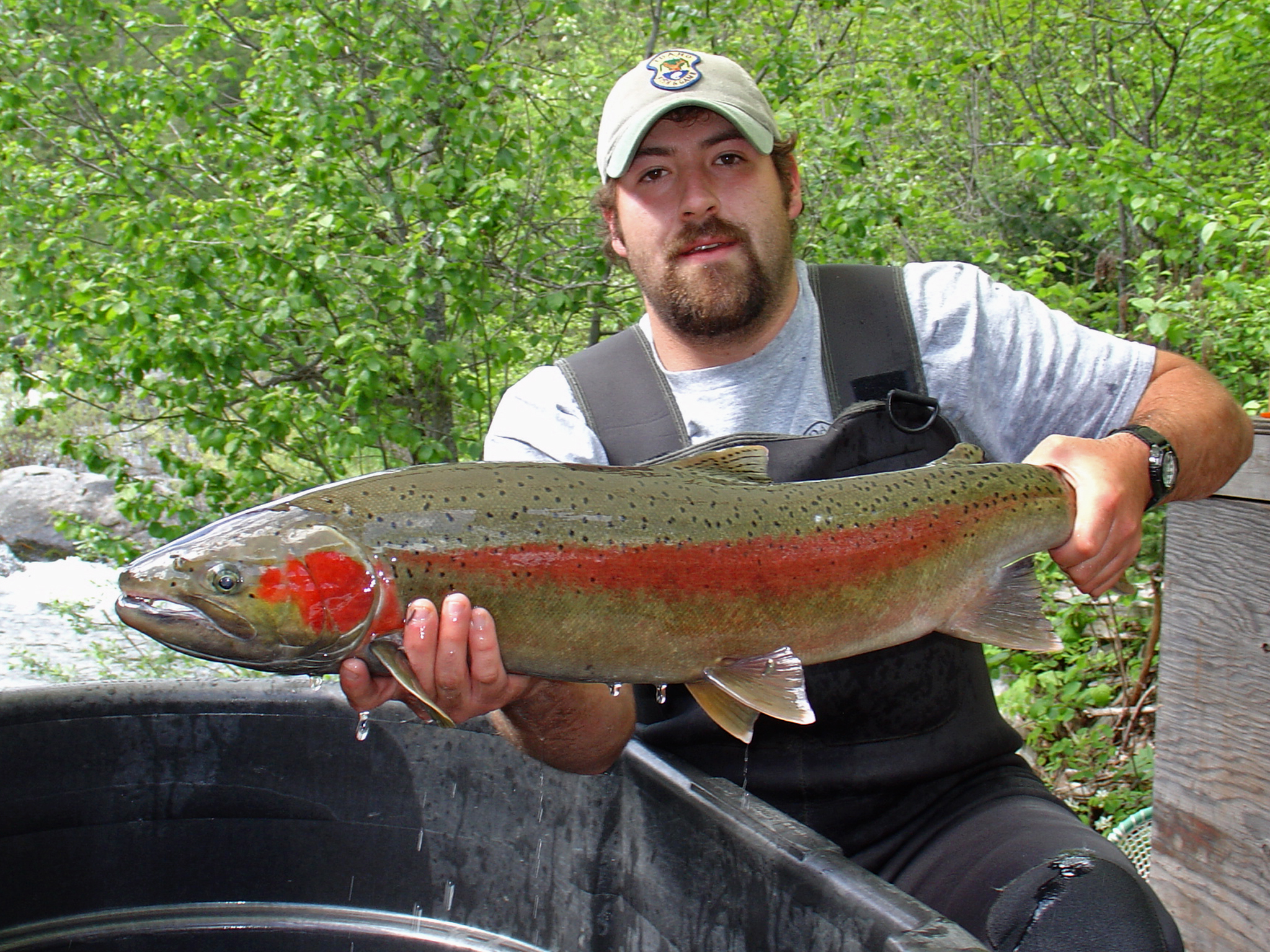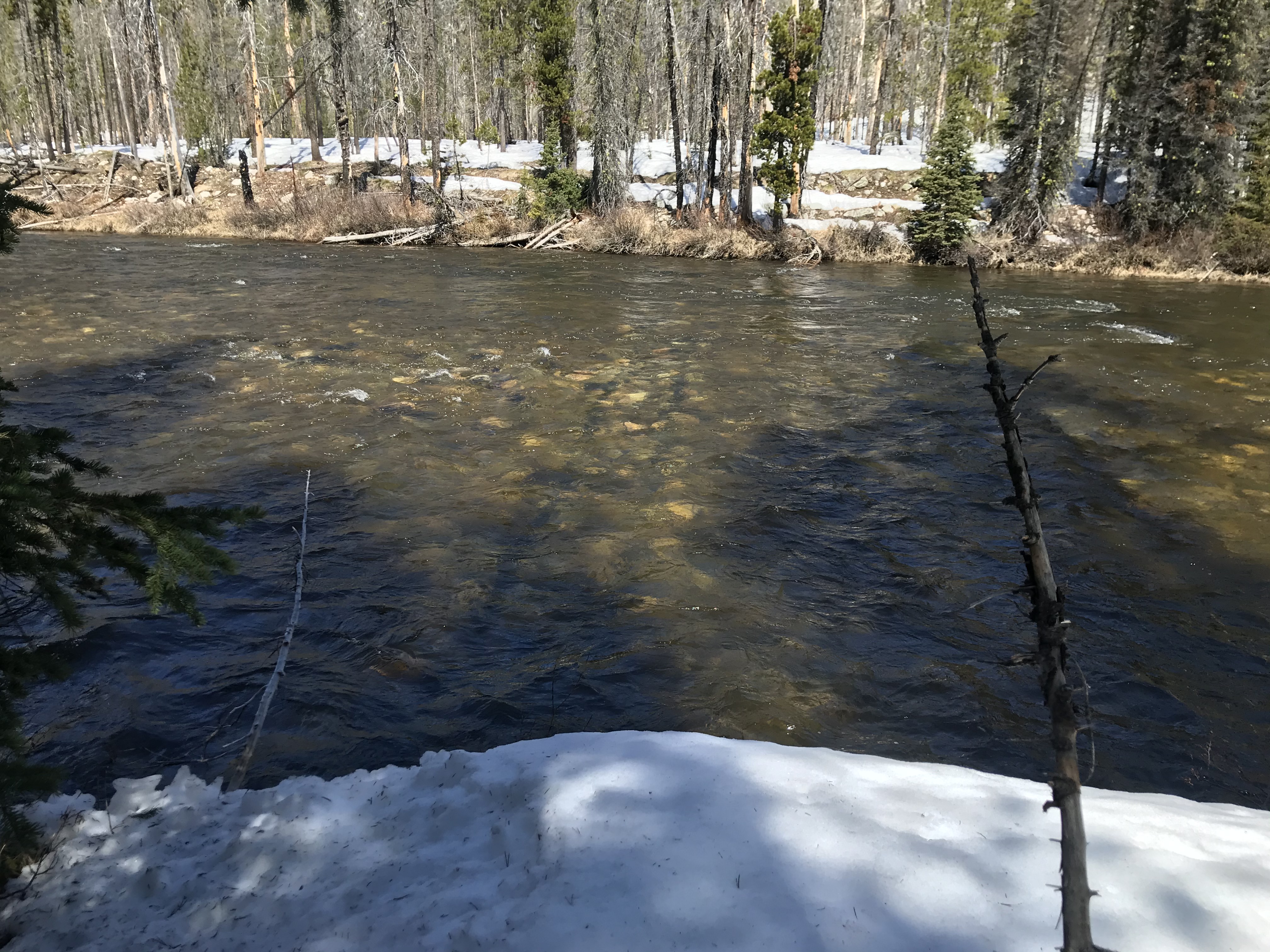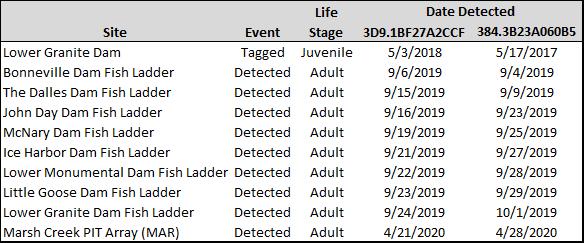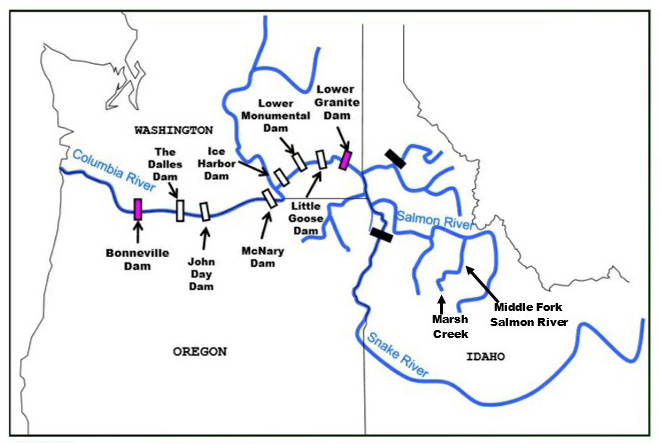Last fall IDFG wild salmon and steelhead monitoring staff, installed a fish-detection system - called a PIT array - into Marsh Creek, a tributary to the upper Middle Fork Salmon River. This system was put in place primarily to be able to count wild adult steelhead returning from the ocean back to their birthplace in central Idaho. Well, now its steelhead spawning season (April-May) and we’ve been anxiously awaiting our first detection of an adult returning to Marsh Creek to spawn.

Steelhead returning from the ocean as adults begin entering Idaho as early as August each year, yet they don’t spawn until the following spring, typically in April and into May. Idaho’s wild steelhead have been listed as threatened under the Endangered Species Act (ESA) since 1995. The early and mid-2000s saw substantial increases in wild Snake River steelhead with several years returns over 40,000 fish; however, wild steelhead runs have dropped dramatically over the last four years. And, unfortunately our 2019-2020 return across Lower Granite Dam hasn’t been very good either. Each year we get a very accurate count of fish that ascend Lower Granite Dam, a large portion of which return to Idaho. However, data from the dam doesn’t tell us where these fish are going, and what the abundance of wild steelhead is in individual tributaries in Idaho.
For other anadromous (ocean-going) fish like Chinook Salmon, determining the number of adults which returned to tributaries is fairly straight-forward since they spawn in late summer when rivers are clear and low and fish are easily spotted and counted. But, steelhead spawn in the spring just as rivers begin to swell with mountain runoff while also becoming cloudy, so counting adult steelhead is much more difficult. In some places weirs can be used to capture fish, sample and count them, then release them to spawn. However, installing and operating a weir is simply not possible in most Idaho streams, since spring flows would wash them out.
But by inserting PIT tags into juvenile steelhead emigrating to the ocean and into adults sampled at Lower Granite Dam we can use PIT tag arrays as a safe and efficient way to count adult steelhead returns to specific tributaries. Also, these arrays are a very powerful tool, especially in a place like Marsh Creek, which is one of the highest elevation spawning tributaries, and as such is nearly inaccessible currently due to the snowpack.

Not only does the PIT array system detect PIT-tagged steelhead that pass over the antennas, but through the use of a logging controller and satellite communications, biologists can access these data over the internet.

So, we recently completed an online query of the massive Northwest PIT tag database called PTAGIS, and we were pleasantly surprised to have gotten some adult detections. Thus far the Marsh Creek PIT array has detected four individual wild adult steelhead, with the first one detected on April 21st, and the most recent on April 28th. Two of these steelhead were tagged as adults at Lower Granite Dam as they were sampled on their way returning from the ocean back to Idaho. Since the two steelhead tagged as adults were sampled at Lower Granite Dam, we also know their length, approximately 27 and 28 inches; captured, tagged, and released on August 21st and September 4th of 2019, respectively.
Tag code, tag site, length at tagging, life stage and date tagged for four adult wild steelhead detected at the Marsh Creek PIT array in April, 2020.

The other two steelhead were actually tagged as juveniles at Lower Granite Dam on their way from Idaho to the ocean (emigrating), These fish were captured, tagged, and released on May 17, 2017 and May 3, 2018; and were both about eight inches in length. Below is a tag detection history of the two steelhead tagged as a juveniles. The steelhead tagged in 2018 spent one year in the ocean before returning, and the steelhead tagged in 2017 spent two years in the ocean. Both fish passed Bonneville dam in early September of 2019. Both fish passed the last of eight dams on the Columbia and Snake Rivers (Lower Granite Dam), one seven days before the other, before entering Idaho in early to mid-October. Since then they have been slowly making their way up the Snake River to the Salmon River, up the Salmon River to the Middle Fork Salmon River, and eventually to their birthplace in Marsh Creek (about 19 miles northwest of Stanley).
Detection history of two adult wild steelhead tagged as juveniles at Lower Granite, detected through the Columbia and Snake River dams and eventually at the Marsh Creek PIT array.

These steelhead traveled around 800 miles from the ocean to Marsh Creek, while climbing 6,600 feet in elevation (see map below). These adults will be spawning soon to continue their life cycle. But, before that, hopefully we see some additional steelhead detections at this PIT array.

For more information on wild salmon and steelhead projects, visit our Wild Salmon and Steelhead Webpage.

